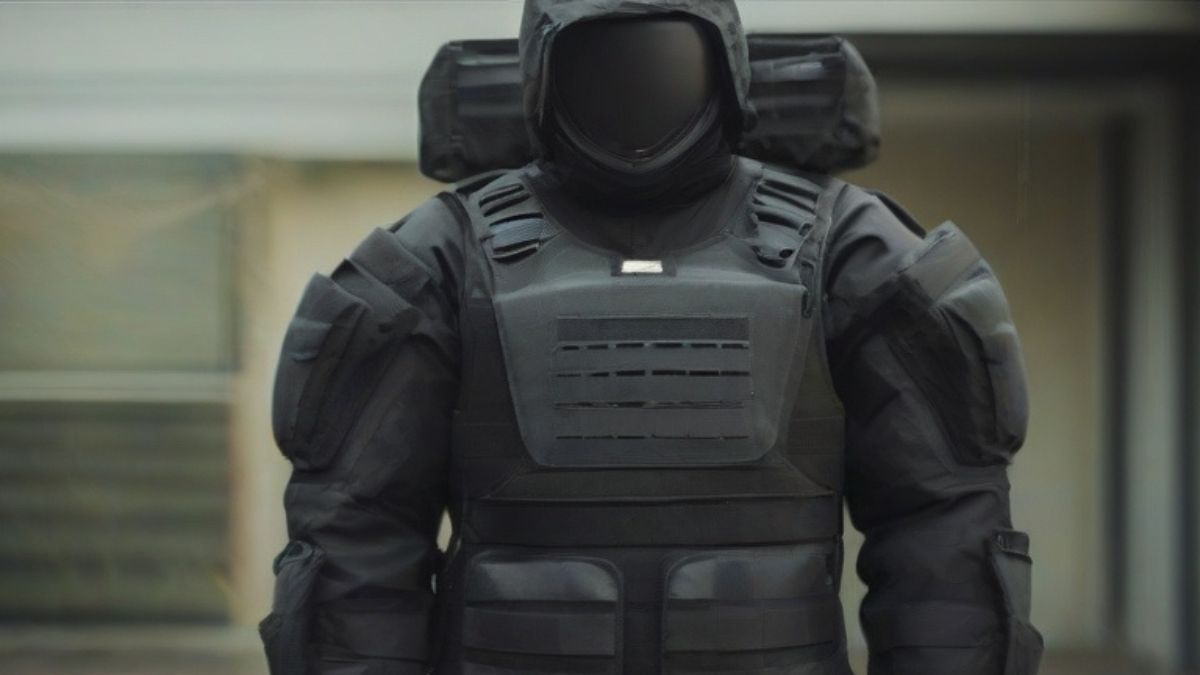Graphene- Revolutionizing Bulletproofing

By Girish Linganna
Graphene, an incredibly thin layer of carbon, has attracted the interest of scientists and engineers globally due to its applications in electronics, energy storage and more. It has been praised as a remarkable substance with various potential uses, such as the field of bulletproof materials, which holds significant promise for this valuable resource.
In the past, bulletproof vests were typically constructed using layers of heavy and cumbersome materials, such as Kevlar. While these materials have been successful in fending off bullet attacks, they have limitations due to their weight and bulkiness. Graphene’s exceptional characteristics make it a lightweight and flexible alternative and render it the perfect choice for bulletproof applications.
What is Graphene?

Graphene, an artificial material, is a single layer of graphite. While graphene’s structure is two-dimensional, graphite has a three-dimensional crystalline one. This means that graphene is very slender—only one atom thick. Two research scientists who were later awarded the Nobel Prize (in 2010), Kostya Novoselov and Andre Geim, discovered graphene at the University of Manchester in 2004. They stuck a piece of tape on graphite and then peeled it off, repeating the process a few times. A single layer of graphene was found stuck to the sheet.
Graphene has a hexagonal atomic configuration like chicken wire nets. This crucial hexagonal structure allows each carbon atom to bond covalently with three more around it. This makes graphene extraordinarily stable and robust. It is also a good conductor of electricity because its atoms allow electrons to move around freely.
Strength of Graphene

Graphene possesses unmatched strength, with a tensile strength more than 100 times that of steel. This implies that a single layer of graphene could potentially halt a bullet dead in its track. Additionally, graphene is an excellent conductor of heat and electricity, which could aid in dispersing the energy from a bullet, further improving its ability to stop bullets.
Scientists at Rice University, in 2014, made notable advancements in using graphene for bulletproof materials. They created a composite material consisting of two layers of graphene with a layer of carbon nanotubes in between. This innovative structure effectively absorbed and dispersed the energy from a bullet impact, preventing it from penetrating through the material. In tests, the composite successfully stopped a bullet fired at close range.
Carbon nanotubes are tiny, cylindrical structures made of carbon atoms arranged in a unique pattern. They have exceptional properties: they are incredibly stiff, flexible and even stronger than steel! They can conduct electricity and manage heat well, making them useful in electronic devices and thermal applications. Carbon nanotubes have great potential in such fields as nanotechnology, materials science and medicine.
Scientists have been exploring various methods to use graphene in bulletproof applications. One approach involves developing a flexible fabric made of graphene that can be woven into clothing or used to reinforce existing materials. This advancement holds the potential to transform personal protection, offering lightweight and comfortable bulletproof clothing that surpasses current options in terms of its effectiveness.
Scientists are also exploring the use of graphene-based composites in the construction of vehicles and buildings. By adding graphene to these materials, it could lead to lighter, stronger and more durable structures that are also bulletproof. This breakthrough would have important implications for military, law enforcement and civilian safety.
There Are Challenges
Although graphene shows promise as a bulletproof material, there are hurdles to overcome. A significant challenge is the expensive and time-consuming process of producing large amounts of high-quality graphene. This makes it challenging to use on a commercial scale. Nevertheless, researchers are working on finding more cost-effective production methods which could make graphene more accessible for bulletproof applications.
It is extremely difficult to make a large sheet of two-dimensional materials using modern production methods. All attempts by researchers to produce large sheets of grapheme have resulted in it breaking into tiny flakes. Since graphite is simply layered graphene, attempts to create graphene often just produce graphite.
However, Rutgers University researchers found that using chemicals to exfoliate graphite into individual graphene sheets is the easiest way to make substantial quantities of graphene. However, oxygen distorts the new atomic structure of graphene and degrades its properties. Side reactions with oxygen occur, forming electrically non-conducting graphene oxide, rendering it useless as a commercial product. Over the past two decades, researchers have toiled to remove oxygen from graphene oxide to obtain high-quality graphene.
After years of research, Manish Chhowalla, one of the professors in the Department of Material Science at Rutgers University, discovered that baking exfoliated graphene oxide for merely one second in a 1,000W microwave oven expunges oxygen from graphene oxide. This has succeeded in producing exceptionally high-quality graphene with properties close to those in pure graphene.
Also Read, Will Indian Army Finally Get Rifle Protection Helmets?
In Conclusion
Graphene has great potential as a bulletproof material. Its amazing strength, light weight and energy dispersion capabilities make it an appealing choice for personal protection and structural applications. Although there are obstacles to overcome, ongoing research is bringing us closer to a future where graphene-based bulletproof materials will be widely used. With advancements in graphene production and engineering, we may soon have bulletproof vests and other protective gear made from this incredible material.
(The author of this article is a Defence, Aerospace & Political Analyst based in Bengaluru. He is also Director of ADD Engineering Components, India, Pvt. Ltd, a subsidiary of ADD Engineering GmbH, Germany. You can reach out to him at: girishlinganna@gmail.com)





